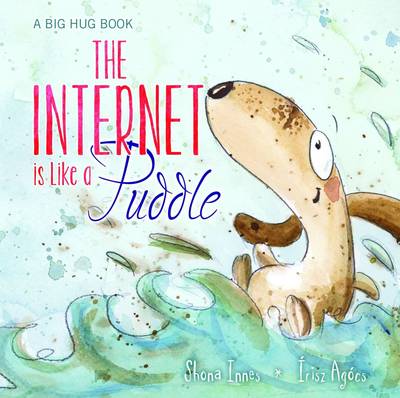Updated timetable
Please note the change to our PE days. These will now be on a Wednesday and a Friday morning. Our timetable for the next half term is below.

Safer Internet Day
As part of Safer Internet Day, Year 1 listened to a story all about staying safe whilst online. The children have learnt about what personal information is and why it is important to keep it private.
Smartie is a very happy penguin who receives a tablet for his birthday and the story is about the situations he finds himself in as he starts to use his new device. He finds a pop-up wanting him to spend money, his brother goes on his tablet and he also plays a game online too. The key message is to go to an adult for help.
Following this learning, the class enjoyed making their own internet safety penguins and singing a very important song.





Help at home by talking to your child about the importance of internet safety and how essential it is to talk to someone you trust if you are ever unsure about an online issue.
Here are some resources to enhance this learning further.
What is Jessie and friends?
Here are some books that are a great buy, too.




Getting creative with classical music
Each Wednesday afternoon, Mrs Bald teaches music with Year 1. The children have enjoyed listening to and exploring a new piece of music by a British composer named Gustav Holst.
The class watched and listened to Mars by Gustav Holst, a British composer.
Through this music, the composer is telling a story all about the planet, Mars. The children shared their thoughts and asked a few questions.
I wonder if Mars is big or small?
I wonder what is happening on Mars?
Using drums and other instruments, Year 2 were asked to play them in different ways such as a really smooth way or by drawing circles on the drum with their palms.
After listening to the piece of music again, the children thought about how they would travel to planet Mars.
Of course, by rocket!
We must prepare for take off!



3, 2,1 …………………….

Help at home by listening to Mars by Gustav Holst with your child and discuss the instruments that can be heard.
Abbey House Museum
At Abbey House Museum, Year 1 stepped back in time and wandered through the enchanting streets, shops and houses to experience life as a Victorian in Leeds. The children compared the standards of living with those of today, and discovered how people lived, worked and were educated in Victorian England.
The children represented our school impeccably and we feel very proud of them all. During the workshop, the class learnt about what life was like for people 100 years ago and how household items have developed over time.
Help at home by chatting to your child about the visit.
- What can they remember?
- What did they learn?
- Which part of the museum was their favourite?
- Can they name some differences in the ways people lived 100 years ago compared to now?
- How did people wash their clothes and warm their homes?
- What were the differences between rich and poor households?
Science: We are biologists!
| animal | a living creature |
| mammal | an animal with hair or fur on its body |
| bird | an animal with feathers, wings and a beak |
| fish | animals that live in water and have fins and gills |
| amphibian | an animal that lives on land and water |
| reptile | an animal with dry scales on its body |
| carnivore | an animal that eats other animals |
| herbivore | an animal that eats plants |
| omnivore | an animal that eats other animals and plants |
- What is a mammal?
- Are all animals mammals?
- Is a fish a mammal?
Find out more
Do some research as a family about mammals. Your child could draw pictures or diagrams and label them, visit a farm and photograph the mammals or simply use books and the internet to find out more.
Encourage your child to bring their home learning in to school to share with the rest of the class.
- Do mammals give birth to live young?
- Are they warm or cold blooded?
- Can mammals breathe underwater?
- Are some pets mammals?
- Which farm animals are mammals?
- Are humans mammals?
- Finally, share this video clip together.
https://www.bbc.co.uk/bitesize/topics/z6882hv/articles/zfm84xs
History – Shopping in the past
History is the focus of our topic learning this half term. During this topic, we will be ordering significant events in our lives and we’ll be discussing them using historical vocabulary.


During this exciting topic, the children will discuss how significant things have changed over time: the food that we eat, the shops that we visit and how trade has changed.
Below is the vocabulary that will be learnt and referred to throughout the lessons.
| past | something that has already happened |
| present | something that is happening now |
| ancient | very old |
| modern | the present day |
| similarity | when something is the same |
| difference | when something is different |
| sequence | put in the correct order |
| trade | the buying or swapping of products and services |
| timeline | a list of important events arranged in order |
Help at home by talking about what shopping was like when you were younger and ask grandparents for their memories too.
Have shops changed?
How were items paid for?
Living and Learning: I know what a drug is.
Happy New Year to you all.
We have been so impressed with the all the children this week. They have returned to school with super learning attitudes.
In Living and Learning, the class learnt about things that can go into our bodies and onto our skin and how this can make people feel.
After drawing around one of the children and labelling the outline, we thought about all the different things that might go into or onto a person’s body.
• What things might go into the mouth?
• What might go into the nose or ears?
• What things might go onto the skin?

Next, working in small groups, the children sorted picture cards according to whether the image shown was helpful or harmful, or whether some can be both helpful and harmful to our bodies.
Helpful: fresh air, water, sunscreen.
Harmful: smoke, berries from the garden may be harmful if we don’t know what they are or if they are safe to eat.
Both helpful and harmful: hygiene and cleaning products and medicines must be used safely otherwise they can be harmful; if someone eats too many sweets or drinks too much (fizzy drink) it can damage their teeth or make them feel ill; doctors and nurses use syringes to give injections that help bodies stay healthy but it is dangerous to pick up syringes if we see them lying on the ground.
Things that go onto bodies: make-up, clothes, moisturiser/cream, water, tattoos, hugs/kisses, sand, jewellery, animal hair/licks, smoke, plasters, bubbles, medicines
Things that go into bodies: food, water, fizzy drinks, sweets, medicines, fresh air, insect bites, injections, smoke
Help at home
It is important that young children begin to develop an understanding of drugs. Talk to your child about medicines – they’re helpful drugs, but only when used by the right people in the right way.
Here are a few scenarios for you to discuss with your child.
1.
Amrit has eaten too much ice cream and is feeling a bit sick.
a. Eat more ice cream
b. Drink water and have a rest
c. Jump up and down
d. Something else?
2.
Amrit’s skin has a rash — with little red spots.
a. Don’t tell anyone
b. Use some of mum’s face cream on it
c. Go with an adult to see a doctor
d. Something else?
3.
Amrit has dropped a can of black sticky liquid in the shed — it is spilt on the floor.
a. Leave it
b. Clean it up
c. Tell an adult
d. Something else?
4.
Amrit has fallen over and has a
grazed knee.
a. Wash it with water
b. Rub a leaf on it
c. Put washing-up liquid on it
d. Something else?
5.
Some shampoo has gone in Amrit’s eye by accident at
bath time.
a. Wash the eye with water
b. Rub the eye
c. Hold a wet flannel on the eye
d. Something else?
Merry Christmas
Year One would like to wish everyone a very Merry Christmas. We recorded our singing and really hope you like it!
We are so proud of each and every child for the efforts they have put in to our nativity – Wriggly Nativity. It was a huge success!
Well done to all!


In the new year, Mrs Bye will be joining our team. She is currently doing her teacher training and is really looking forward to working in Year 1. Mrs Bye will be teaching some of the lessons on Wednesdays, Thursdays and Fridays. I (Mrs Freeman) will be in class supporting Mrs Bye.
It has been a super term and all of us have been amazed with how well the children settled into their new year group. There has been some fantastic learning, great progress and a little bit of fun along the way.
Thank you for our Christmas gifts.
Merry Christmas form the Year 1 staff team.
Living and Learning: To recognise different feelings in myself and others.
Recently, our Living and Learning sessions have focused on mental health and emotional wellbeing. The children have been recognising and naming some feelings that they might experience and the impact these can have on their body and mind.
Mental Wellbeing
The class have discussed that there is a normal range of emotions (e.g. happiness, sadness, anger, fear, surprise, nervousness) and that all humans experience emotions in relation to different experiences and situations.
The benefits of physical exercise and time outdoors can impact positively on our mental wellbeing and happiness.
I love to get some fresh air.
Riding my bike is my favourite thing to do.

Sometimes big feelings can be defined as intense feelings which can often appear suddenly and in response to a situation. The children discussed whether these feelings are good/healthy or not so good. and they could talk about feelings that can intensify (get stronger).
Big feelings, like anger, make me feel cross for a long time!

Help at home
Getting young children to talk about their feelings can be difficult at times. Please reassure your child that they can share their feelings with a trusted adult or they can use the Living and Learning box in our classroom.
Share this story with your child.
It is a reassuring picture book encouraging children to open up about their fears and anxieties to help manage their feelings.
The perfect book to soothe worries during stressful times.
PE – using apparatus
This week, the children had so much fun using the large apparatus in PE. It was great to see all of the skills learnt in recent gymnastics sessions put into action. The children showcased their balancing, agility and coordination expertise.


The children modelled improved coordination and spatial awareness. It was great to see some of the pupils overcome fears when having time to explore apparatus and navigate across, on, over or under different equipment.









